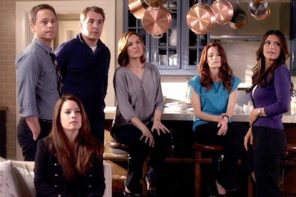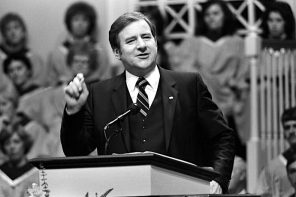for EVM
These are the days of heat, Corinthians 13, and cotton sateen. Every summer, the budgets of twentysomethings bulge with the expenses of the wedding calendar. “If I speak in the tongues of mortals and of angels, but do not have love, I am a noisy gong or a clanging cymbal,” attendees hear from the pews as they thirst for the promised open bar. Previously unnoticed Episcopal churches become impetus for familial combat, and Elks Clubs find new nostalgia as the site of the First Dance.
Although some may strain to find the right tune that is neither too sappy nor too obscure, this year an obvious option reveals itself. With renewed patriotism, girls (and girls) and boys (and boys) will endure the swelter, survive the photos, and finally stand up to Etta James’ “At Last.” Just like Michelle in that inaugural bridal chiffon, the ones wearing dresses will swoon in the arms of their other. Their life is like a song. Listening to black women who are unlucky in love sing when white people are happily in love is nothing less than a rite of June.
Another seasonal advent is the expansion of the New York Times Weddings/Celebrations pages of the Sunday Styles section. “The wedding page is a weekly obsession for thousands of Times readers,” David Brooks wrote in 1997. Timothy Noah of Slate agreed, saying that they contain a “certain camp value for readers.” Mothers, hipsters, politicos, and the lovelorn concur: reading the Times wedding pages is periodical porn. Where else are subjects still celebrated for who they are the “son of” and “daughter of”? Where else are parents confirmed, publicly, that dropping $40,000 a year on a liberal arts education may pay off with the Gray Lady’s regard? The New York Times Practical Guide to Practically Everything (2006) summarizes the essential outline of an announcement:
Mention your alma maters, current occupations, noteworthy awards, special achievements, and charitable activities. Do the same for both sets of parents. (Dropping the names of a few illustrious ancestors can’t hurt.)
This thumbnail guide poses casually what is actually a timeworn rhetorical precision. In Times lexicon, everything is an overabundance of fortune just barely contained by their boilerplate. Everyone has a degree worth advertising. Everyone has parents worth invoking. And every little step and turn of the talk promotes an etiquette that values open doors and natural achievement. The bride’s genealogy, for example, always precedes the groom’s. The undergraduate degree is one you “graduated from” whereas the graduate degree is one you “received.”
Flourishes of detail are unnecessary (the names speak for themselves) unless they don’t. Thus, the employer of one subject is “CytImmune Sciences, a biotechnology company in Rockville.” A father of another is described as a former leader at “Maidenform, the lingerie manufacturer then in Bayonne, NJ.” Corporations receive the telling appositive more often than any other proper noun, more even than those elaborating descriptions of famous forbears. “The bridegroom is also a grandson of Baron Georg von Trapp,” concludes one, “The family’s story was the basis of The Sound of Music.” In this late-modern moment, there are fewer von Trapps to honor, and more Maidenform investors to assuage.
To read the Times announcement pages is to encounter repeatedly the symbolic hegemony of starter hedge funds, Manhattan arts agencies, and the Ivy League as the taming ties of couplehood. Any elitism (the couple “met in kindergarten at the Ethical Culture School in Manhattan”) is counterbalanced by ecumenism (“the bridegroom’s father is a plastic surgeon in Boca Raton”). “Whereas the old establishment was based on birth and breeding,” David Brooks explains, “this new establishment rests on education and career.”
While the Upper East Side doyennes will still make an appearance, the overarching spirit of the pages is determinedly representative. Same-sex couples and mixed-race couples, old money couples and new money couples, couples who like tennis and couples who like cooking classes—everyone is there. The reader then becomes convinced by this welcoming attitude that you, too, could marry on Block Island; that you, too, could have parents who live in Bermuda; and that you, too could know that seafood display equipment comprises a professional consultancy. This is America: anything, including society ascendance, is yours for the having.
Then you read more closely, and you realize that whatever career fair these folks attended had seriously curtailed options. Words like “associate” and “analyst” and “manager” abound, whereas words like “union” and “paramedic” and “zookeeper” are nowhere to be found. Everyone seems to be a lawyer or a professor emeritus. Father is often an investment manager. Or a managing director.
Even if many of the New Brides occupy equal slate with their partners, the vast majority of parents seem locked in a professional asymmetry, where mother is a special education teacher while father is master of some faraway universe (frequently in London, though sometimes in Beijing). The children (brides and grooms) may have a junior league gig (graduate student, casting assistant, poet) but the balance of power must find a high bar of equilibrium: if one of the wedding party is a painter, then daddy must be a partner; if one of the wedding party is a managing director, then daddy might be a lower court judge. In the end, the equation must achieve establishment heights. Meanwhile, most brides will continue to use their names professionally.
Religionists will appreciate the gesture to contractual ritual specificity. “In the case of a wedding, a civil union, or a partnership registration, we must have the name of the person who will sign the official certificate,” advises the online instructions for announcement submission, “For an interfaith event, please include the names and affiliations of any other officiants who will participate.”
Religion here is a first-paragraph shibboleth, the entry code to the subsequent curriculum vitae. Over the course of the announcements, the so-called “Episcopacy” has become less Anglican and more ethnic. In 1997, Brooks tallied that “40 percent of the ceremonies are Jewish, only 17 percent are Episcopalian, 15 percent are Catholic, 13 percent are other Protestant, and 15 percent are non-religious or non-denominational.” Twelve years later, Jews remain in the lead, although with only 26 percent of the ceremonies. The other cohorts lost statistical heft, too, as 10 percent are Episcopalian, 16 percent are Catholic or Greek Orthodox, 21 percent are other Protestant, and another 21 percent are non-religious or non-denominational. This represents a decrease in Episcopalians and Jewish rites, yet an increase in the non-denominated (not to mention the 6 percent that are Sikh or Hindu) who are married by justices of the peace, university provosts, humanist celebrants, police chaplains, and, in one case, the former mayor of Malibu.
A minority of the announcements suggest a mix-and-match approach (with, say, a Hindu officiant and a Vietnamese ceremony), but the vast majority just incant Rabbi X or Reverend Y with a telegram’s abbreviated breeze.
At the end of the run (of genealogy, of professions, of pastors), it is hard not to wonder whether all this begetting does not diminish ritual potency, whether the rote rehearsal of genealogy affects the announced occasion. Philosopher C.D.C. Reeve wondered as much in Love’s Confusions (2005). “Even if the formulas of romance I employ are my very own,” he wrote, “their picture of love may not survive exposure.”
The Times formula may or may not match that of the advertising couple; one likes to imagine overbearing dowagers foisting an announcement upon initially resistant but finally acquiescent inheritors. No matter their source, though, it is these formulas that haunt beyond the Sunday smirk they may provide. What love, so formatted, can survive exposure? Every dating service and yenta knows that monogamy thrives when matters of money, sex, and religion are settled. The poise recorded in Weddings/Celebrations tempts satiric demolition by its readership; not because the formulas are inherently foolish but because to believe love might be made from a formula is. But these couples are not joking: these bricks, so neatly stated, armor against life’s vicissitudes.
If only. At its hip-swinging height, love permeates, pressing between gritted teeth and crow’s feet, between the tedium of a day and the discontents of whatever profession. Etta may be right that it’s the thrill you rest your cheek to, and St. Paul may have it when he says it endures all things. But these Weddings don’t live on love; they live on calculation.
One of the wicked pleasures as a reader of the announcements is to fantasize about the bloody demise of their pristine merger—a nuclear spat at a Dartmouth reunion, perhaps, or an affair with father’s corporate masseuse. Then, the announced will find all that remains is the formula, mocking their grief with its bankruptcy of affection.
This is the postscript of these prestige genealogies: the wrong surname on the business cards, the dowager disinheriting from her Connecticut estate, or the child custody agreement deciding who will pay for St. Paul’s and who will pay for Princeton. It’s the cracks in the glass of the announcement photo, the one with faces looking out and grinning for the camera’s mirroring glass. “For now we see in a mirror, dimly, but then we will see face to face,” the author of Corinthians hopes, “Now I know only in part; then I will know fully, even as I have been fully known.”
In the end, the wish is never for more structure, never for more mirrors, never for more of mother or father or money or sex. In the end, it is always: I wish I’d had more of you.




